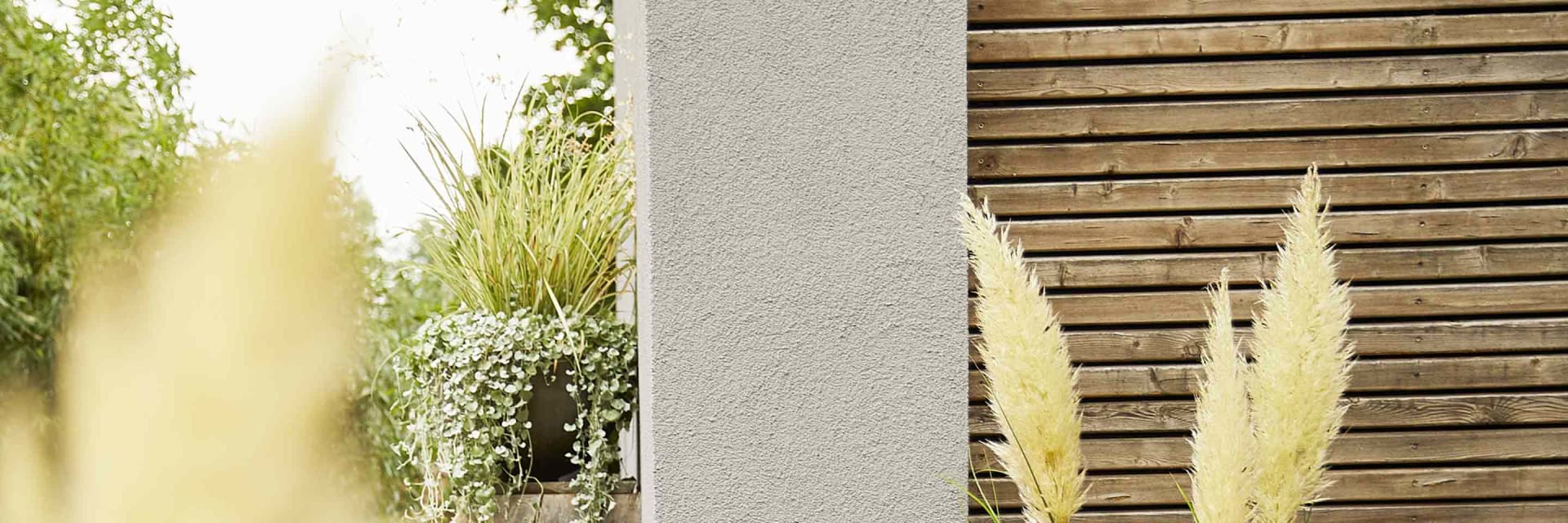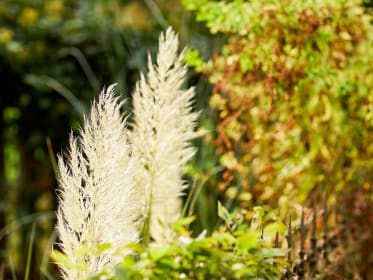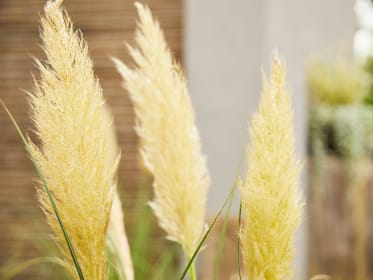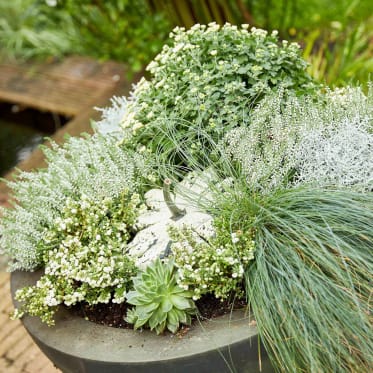Frequent search terms

- COMPO
- Guide
- Plant Care
- Garden
- Garden care
- Cutting pampas grass
Cutting pampas grass
Slender green stalks and fluffy cream-coloured fronds make pampas grass one of the most popular ornamental grasses in the garden. But when does pampas grass actually need to be cut – do you need to cut it at all?

When should you cut pampas grass?
If you want to cut your pampas grass, spring is a good time to do it. Cutting ornamental grasses in the autumn is one of the most common mistakes there are. After all, you're just in the process of tidying up the garden and preparing it for the winter, which often includes cutting back the grasses. But this is strongly discouraged! And it makes no difference whether we're talking about evergreen ornamental grasses or deciduous ornamental grasses like Chinese fountaingrass or maiden silvergrass. No ornamental grass wants to be cut back in the autumn.
If you cut pampas grass in the autumn, rainwater can easily run unhindered into the stalks and freeze during the winter, causing serious damage to the plant. Instead, we recommend that you tie the pampas grass into a round bundle before winter starts. This will help to protect the plant against winter dampness. You can also additionally line the inside of the plant with some foliage. Do not reach for the pruning shears until the icy frosts have passed and just before new stalks form in the spring. This is the ideal time to cut back the grass.
Does pampas grass have to be cut – and if so, how?
As a rule, pampas grass doesn't need to be cut back every year. Having said that, cutting back or thinning out may enhance the appearance.
Before you start, it's advisable to put on long-sleeved clothing and thick gardening gloves. Such precautions will help to prevent cuts, as the stalks can have very sharp edges. You can then cut all the old stalks carrying inflorescences at ground level. If the whole plant has died, it may be advisable to cut it back completely. But often there are only a few isolated brown leaves between the green stalks. Instead of cutting them, simply remove with a rake or – make sure you put on gloves first – by hand.
If you have a completely dead specimen in your garden that has grown considerably in height and width over the years, it's a good idea to tie the grass into separate small bundles. This will make cutting back much easier.
A clean cut
Apart from long-sleeved clothing and gloves, the choice of cutting tool is also important. Ideally, use pruning shears with long handles so that there is enough distance between you and the pampas grass – and so that the stalks cannot injure you. In addition, slightly less energy is required if the pruning shears have long handles. Also make sure that the shears are not blunt – they should be sharp so that it's easy for you to cut the grass.

Fertilising pampas grass
Once you've finished cutting back the pampas grass, give it some extra care and attention by working a little compost or special-purpose slow-release fertiliser for ornamental grass into the soil. This will provide the plant with important nutrients, which it will make good use of when new shoots grow in the spring. But it's important not to apply too much fertiliser and to use a fertiliser especially for ornamental grasses. The pampas grass may shoot up too quickly if the nitrogen concentration is too high, which is detrimental to healthy growth.
Products for your pampas grass
This might also interest you
















